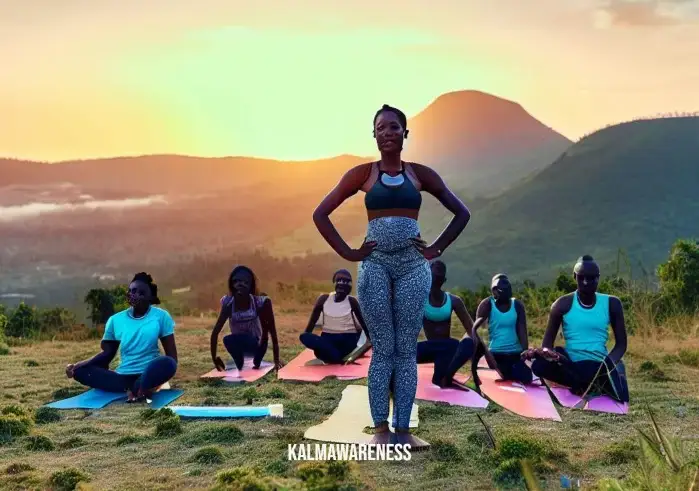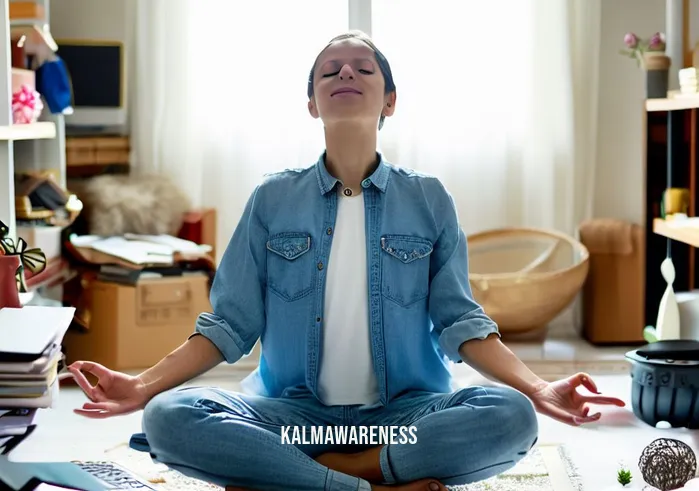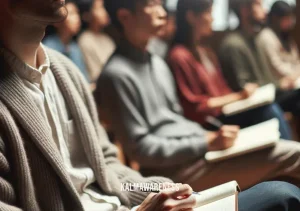Yoga Sequencing: Designing Transformative Yoga Classes
Embarking on a journey of personal transformation is no small feat. It requires courage, resilience, and dedication. One of the most effective ways to facilitate this transformative journey is through the art of yoga sequencing. The sequencing of yoga postures, when executed thoughtfully and with purpose, can lead to profound shifts in one’s mental, physical, and spiritual well-being. In this comprehensive guide, we’ll delve deep into the world of yoga sequencing: designing transformative yoga classes.
What is Yoga Sequencing?
Yoga sequencing refers to the way in which individual yoga postures, or asanas, are organized to form a cohesive, flowing class. The sequence of a yoga class is not random, but rather a deliberate arrangement of poses that build on one another to create a complete, holistic experience. Each sequence is designed to warm up the body, work towards a peak pose or theme, and then cool down, ending in a blissful final savasana.
The Power of Intention
In the art of yoga sequencing, intention is everything. In fact, the transformative power of a yoga class stems not just from the physical postures, but also from the intention behind them. Whether it’s to build strength, increase flexibility, cultivate mindfulness, or open up to new possibilities, the intention set at the beginning of the class serves as the foundation for the sequence.
This practice of setting an intention is what distinguishes yoga from a simple workout routine. It ensures that each posture, each breath, and each movement carries meaning and purpose.
The Elements of a Transformative Yoga Sequence
Designing a transformative yoga sequence requires a deep understanding of various elements.
- Warm-up: Each sequence begins with gentle, warming postures to prepare the body for more intensive asanas. This might include breathing exercises or simple movements like right hand poses to awaken the body.
- Peak pose or theme: The sequence will gradually build towards a peak pose or a theme. The poses leading up to this point will be designed to prepare the body for this climax.
- Cool down: After the peak, the sequence will shift towards cooling, restorative postures. This allows the body and mind to absorb the benefits of the practice.
- Savasana: Finally, each class ends with Savasana, or corpse pose, a moment of deep relaxation and integration.
In the next part of this article, we will delve into the nuances of each of these elements, and explore how you can create your own yoga sequences to facilitate personal transformation. From exploring the subtleties of mindful movement to harnessing the power of yoga meditations, we’ll provide a comprehensive guide to designing yoga sequences that are not just workouts, but transformative experiences.
Continue reading for more insights and practical tips on how to sequence yoga classes that inspire change and growth.

The Art of Yoga Sequencing
As we delve deeper into the world of yoga sequencing: designing transformative yoga classes, we will explore how we can leverage the science of sequencing to maximize the benefits of a yoga practice. In this chapter, we will focus on the key components of a well-sequenced yoga class, drawing on teachings from some of the most influential yoga minds, such as Baron Baptiste and Brett Larkin.
Building the Sequence Around a Peak Pose
In yoga, the ‘peak pose’ is often the most challenging or complex asana in a sequence. The sequence is structured to gradually prepare the body for this pose, through a series of progressively more demanding postures. This preparation can involve both physical warming up and also creating the mental focus needed to execute the peak pose.
According to Baron Baptiste, the structure of a sequence can be seen as a journey toward a destination, with each pose serving as a step on that journey. To build this journey effectively, you can follow these steps:
- Choose a peak pose: This could be any pose that requires a certain level of preparation, whether it’s a balance pose, an inversion, or a deep stretch.
- Identify the muscles and joints involved: For example, if your peak pose is a twisted root yoga pose, you will need to work on opening the hips and the spine. Therefore, the sequence should include poses that target these areas.
- Build the sequence: Start with easier poses that warm up the key areas, then gradually increase the intensity. Make sure to include poses that counteract the peak pose towards the end to balance the body.
Integrating Breath and Movement
An essential component of yoga sequencing is the integration of breath and movement. Known as vinyasa, this principle is a foundational aspect of many yoga styles, including Ashtanga and Vinyasa Flow.
Breathing exercises, or pranayama, can be used throughout the sequence to help students connect their body movements with their breath. This connection enhances the meditative aspect of the practice, promoting mindfulness and focus.
Incorporating Mindfulness
The art of yoga sequencing isn’t just about the physical postures, but also about creating a space for mindfulness and introspection. A well-sequenced class can serve as a moving meditation, facilitating a deep connection between the body, mind, and spirit.
Brett Larkin, a renowned yoga teacher, advocates for the integration of mindfulness practices into yoga classes. These could include meditations, visualizations, or simply inviting students to stay present and focused during their practice.
| Key Component | Description |
|---|---|
| Peak Pose | The most challenging pose, which the sequence is built around |
| Vinyasa | The integration of breath and movement |
| Mindfulness | The incorporation of mindful practices to enhance the mental and spiritual benefits of yoga |
In the next chapter, we will look at some specific sequences, how to adapt them to different levels and needs, and the role of props and adjustments in a transformative yoga sequence. Stay with us for a deep dive into the practical aspects of yoga sequencing and learn how to create classes that truly transform.
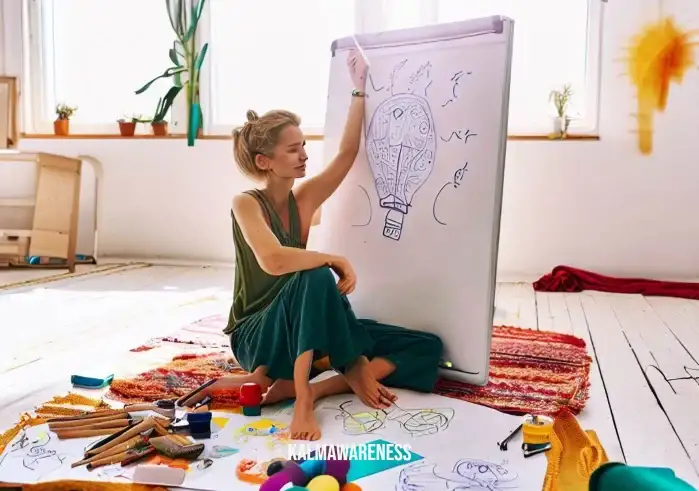
Sequencing for Different Levels and Adapting for Individual Needs
As we journey further into the realm of yoga sequencing: designing transformative yoga classes, we must remember that yoga is an inclusive practice. The beauty of yoga lies in its adaptability and versatility, catering to practitioners of various abilities and health conditions. In this chapter, we’ll explore how yoga sequencing can be modified for different levels and individual needs, making yoga more accessible and transformative.
Sequencing for Beginners
Designing sequences for beginners requires a delicate balance of introducing the foundations of yoga while ensuring the practice is safe and enjoyable. It’s a process that aligns with the words of the great B.K.S. Iyengar who once said, “Yoga does not just change the way we see things, it transforms the person who sees.”
A beginner sequence should primarily focus on basic yoga postures, ensuring correct alignment and breath control. The sequence should progress slowly, allowing ample time for the student to familiarize themselves with each posture. It’s also essential to explain the purpose and benefits of each pose, nurturing an understanding of yoga beyond the physical practice.
Advanced Sequencing
Advanced yoga sequences, on the other hand, might include more complex asanas, like inversions and arm balances. Here, sequencing becomes a creative artform, weaving together poses that challenge the body, mind, and spirit. As the yoga guru Sri Pattabhi Jois said, “Practice, and all is coming.” For advanced practitioners, a well-designed sequence can unlock new levels of strength, flexibility, and mindfulness.
However, even within advanced classes, one should not forget the foundational elements of yoga. Regular reminders about breath control and inward focus can help to keep the practice grounded.
Adapting for Individual Needs
A crucial aspect of yoga sequencing is the ability to adapt and modify for individual needs. From physical injuries to personal comfort, a transformative yoga sequence is one that caters to each student’s needs. Yoga legend T.K.V. Desikachar beautifully encapsulates this in his quote, “The success of Yoga does not lie in the ability to perform postures but in how it positively changes the way we live our life and our relationships.”
Consider using yoga postures stick figures to depict modified versions of postures. You can also guide students through the use of props to facilitate or enhance poses.
The Role of Props and Adjustments
Props, such as blocks, straps, and bolsters, can be incredibly useful in making postures more accessible and comfortable. For example, a block can be used to bridge the gap in poses like triangle pose or forward folds, allowing students to maintain alignment and stability.
Adjustments, on the other hand, help to ensure proper alignment and deepen the asana. These can be particularly helpful in a class setting, where students may need some additional guidance to perform the poses correctly.
| Sequencing Level | Focus |
|---|---|
| Beginners | Basic postures, correct alignment, breath control |
| Advanced | Complex asanas, continued focus on breath control and inward focus |
| Individual Needs | Adaptability, use of props, adjustments |
In the next chapter, we’ll dive into the concept of theming your yoga classes, how to integrate philosophical and spiritual elements into your sequences, and the importance of a grounding closing sequence. Remember the words of B.K.S Iyengar, “The body is your temple. Keep it pure and clean for the soul to reside in.” So, let’s continue our journey to designing transformative yoga classes, promoting not just physical wellness, but mental and spiritual growth as well.
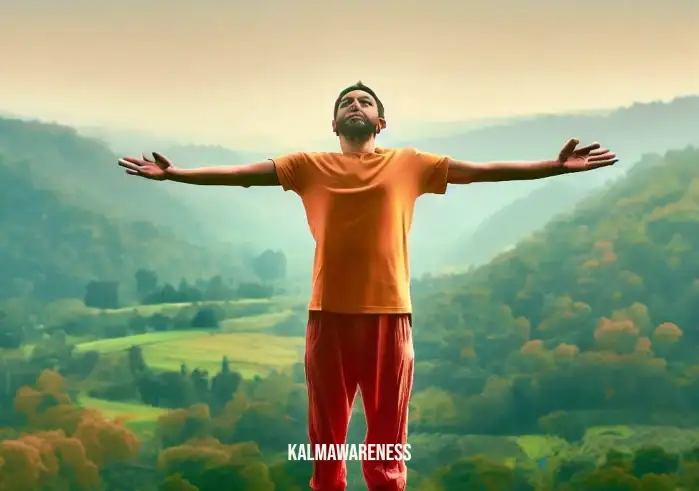
Incorporating Themes and Philosophical Elements in Yoga Sequencing
Continuing our exploration of yoga sequencing: designing transformative yoga classes, we’ll now turn our focus to theming your classes and integrating philosophical elements into your sequences. We’re reminded of the words of Yogi Bhajan, who once said, “When the mind becomes clear and serene the Self reflects without disfigurement, and we realize the Truth in its own original nature.”
Class Themes and Philosophical Elements
The beauty of yoga lies in its depth and breadth, offering both a physical practice and a rich philosophical tradition. The incorporation of these philosophical elements can add a new dimension to your classes, making them truly transformative for your students. This might involve drawing upon concepts from yoga nidra or incorporating elements of the aad guray nameh mantra in your opening or closing sequences.
Consider structuring your class around a particular theme. This could be a concept from yogic philosophy, a quality you wish to cultivate (like courage or mindfulness), or a particular aspect of human experience (like connection or gratitude). Your theme can serve as a golden thread that weaves the entire class together, providing direction and cohesion to your sequence.
Grounding Closing Sequences
The closing sequence is a crucial part of any yoga class, serving to ground the energy raised during the practice and prepare the students for the transition back to their daily lives. This might involve a guided meditation, a period of silence for self-reflection, or the practice of savasana – the final resting pose. The closing sequence is a time for integration and absorption, allowing the benefits of the practice to fully permeate.
Remember the words of Thich Nhat Hanh, “Feelings come and go like clouds in a windy sky. Conscious breathing is my anchor.” Incorporate elements of mindful breathing during this time, guiding your students to anchor themselves in the present moment and carry this mindfulness with them off the mat.
| Class Component | Description |
|---|---|
| Theme | A concept, quality, or aspect of human experience that provides direction and cohesion for the class |
| Philosophical Elements | Concepts drawn from yogic philosophy or spiritual traditions |
| Closing Sequence | A grounding sequence that allows for integration and absorption of the benefits of the practice |
In our next and final chapter, we’ll delve into the role of music in yoga sequencing, how to foster a sense of community in your classes, and the ethical considerations in designing transformative yoga classes. As we move forward, let’s remember the words of B.K.S. Iyengar, “Yoga is like music. The rhythm of the body, the melody of the mind, and the harmony of the soul create the symphony of life.” As you design your yoga sequences, strive to create this symphony, harmonizing the physical, mental, and spiritual elements of yoga. Let’s continue our journey in the next chapter, ever-mindful of the transformative potential of yoga.
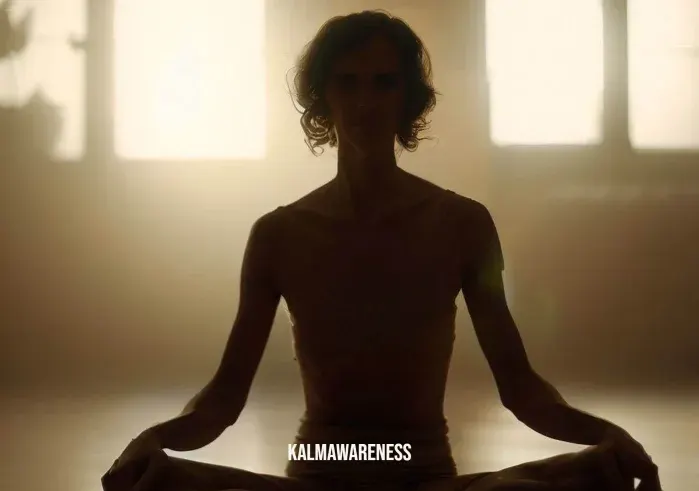
The Role of Music, Community, and Ethics in Yoga Sequencing
As we continue delving into the world of yoga sequencing: designing transformative yoga classes, we now focus on three essential components that influence the transformational power of a yoga class: the role of music, building community, and the ethical considerations.
Music in Yoga Sequencing
“Music gives a soul to the universe, wings to the mind, flight to the imagination, and life to everything,” so said the great philosopher, Plato. Indeed, music can deeply influence the mood and energy flow of a yoga class. A thoughtfully curated playlist can guide students through the ebbs and flows of their practice, providing a sonic backdrop that enhances the emotional and energetic resonance of your sequences.
Imagine a yoga sequence focusing on movement, for instance. The right rhythm can create a tangible cadence that not only motivates students to move but also helps them synchronize their movements with their breath.
However, remember that music should enhance, not overpower, the practice. Use it as a tool to draw students into a deeper connection with their bodies and the present moment.
Fostering Community
The power of community is an often-overlooked aspect of a transformative yoga class. Yoga is not merely a physical practice but also a communal experience that can foster a sense of belonging and connection. Incorporating elements that foster a sense of community can make a profound difference in how students perceive and experience your classes.
Consider creating mindful spaces where students feel seen, heard, and valued. Whether it’s sharing intentions at the beginning of class, facilitating a short group meditation, or simply allowing time for students to connect before and after class, these small gestures can create a warm, welcoming environment that encourages regular attendance and deeper engagement.
Ethical Considerations in Yoga Sequencing
The last component we’ll cover in this section is the ethical considerations in yoga sequencing. As a yoga teacher, you have a responsibility to ensure the safety and well-being of your students. This includes being aware of students’ abilities and limitations, offering modifications and adjustments as necessary, and respecting personal boundaries.
One way to ensure you’re meeting these ethical considerations is by staying educated and informed about the latest best practices in teaching yoga. Continual learning is an essential aspect of being an effective and responsible yoga teacher.
In conclusion, the journey of yoga sequencing: designing transformative yoga classes is a beautiful blend of creativity, awareness, and intentional planning. As we have seen, it involves more than just ordering poses – it’s about creating a holistic experience that nurtures mind, body, and spirit.
Remember, the magic of a transformative yoga class lies in its ability to be more than the sum of its parts. The harmony of thoughtfully sequenced poses, resonant music, a nurturing community, and a commitment to ethical teaching can create an environment that not only changes bodies but also transforms lives.
As you step onto your mat to plan your next class, carry with you the wisdom of these words from the Bhagavad Gita, “Yoga is the journey of the self, through the self, to the self.” Let’s continue our exploration into the fascinating world of yoga sequencing in our next chapter.
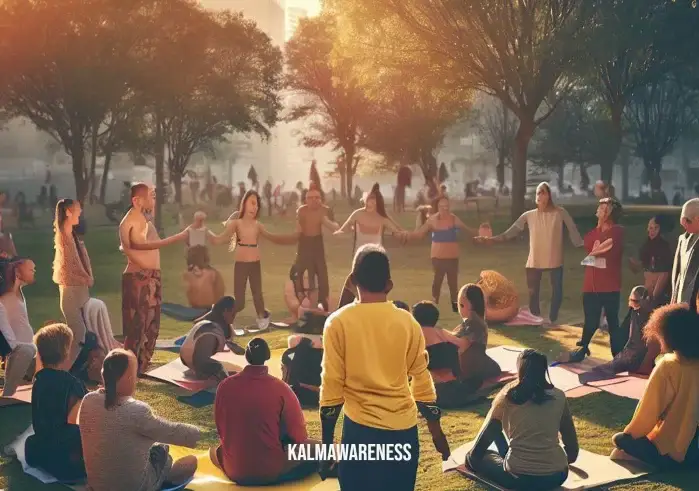
Embodying Transformation: Your Final Guide in Yoga Sequencing
As we conclude our exploration of yoga sequencing: designing transformative yoga classes, let’s delve into the heart of transformation – the practice of embodying the lessons learned on the mat, and carrying them into our daily lives. In this final chapter, we will consider three facets of this embodiment: physical awareness, emotional resilience, and spiritual growth.
Physical Awareness through Yoga
The first step towards transformation in yoga is through physical awareness. It’s through mindful movements, like the flow from right-hand poses to the grounding fetal pose, that we come into a deeper connection with our bodies.
The goal here is not just about building strength or flexibility but cultivating a sense of presence and mindfulness. It’s about learning to listen to the body, respecting its limits, and celebrating its capabilities. A well-crafted yoga sequence can help students learn to inhabit their bodies fully and move with grace, strength, and ease.
Emotional Resilience through Yoga
A transformative yoga class also fosters emotional resilience. As we navigate through challenging poses or a particularly intense yoga sequence, we learn to manage discomfort, handle stress, and navigate our emotional landscape with more patience and grace. This resilience, born on the mat, can translate into greater emotional strength and balance in our everyday lives.
Spiritual Growth through Yoga
Lastly, at the heart of yoga sequencing is the opportunity for spiritual growth. Yoga is a journey inward, a pathway to self-discovery and spiritual awakening. Through practices like meditation and breathwork, coupled with the physical asana, yoga invites us into a deeper relationship with our true self. It’s in this space, as we connect with the divine within and around us, that profound transformation can occur.
In conclusion, yoga sequencing: designing transformative yoga classes is not merely an exercise in arranging poses but an art of crafting a holistic experience that invites transformation on all levels – physical, emotional, and spiritual. It’s about creating a space where students can explore, grow, and ultimately, transform.
May this exploration of yoga sequencing inspire you to create classes that are not only physically engaging but emotionally enriching and spiritually uplifting. Remember, as the ancient yogic text, the Yoga Sutras of Patanjali, reminds us, “Yoga is the cessation of the fluctuations of the mind.” Let your sequences be a pathway to this stillness, this clarity, this transformative power of yoga.
As we conclude this journey, I invite you to explore further, continue learning, and keep returning to your mat. Whether you’re a teacher crafting your sequences or a student exploring your practice, remember – the magic of yoga lies not in the perfection of poses, but in the journey of self-discovery and transformation they facilitate.
Thank you for journeying with us through this exploration of yoga sequencing. We look forward to seeing you back here, delving into more insightful topics about yoga, mindfulness, and wellness on our blog. Namaste.
